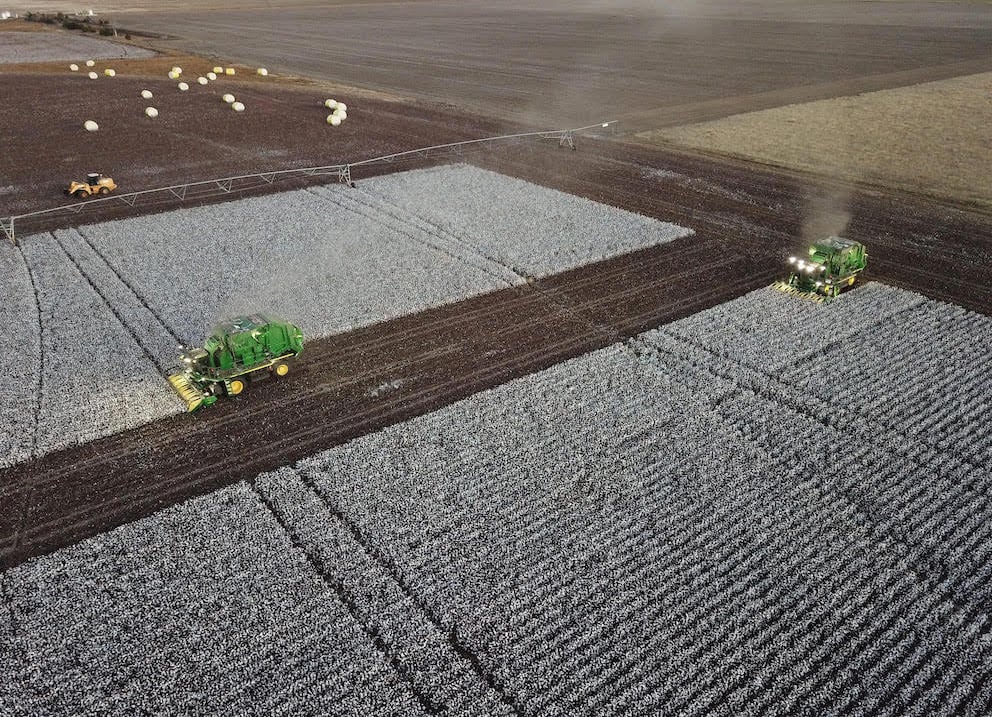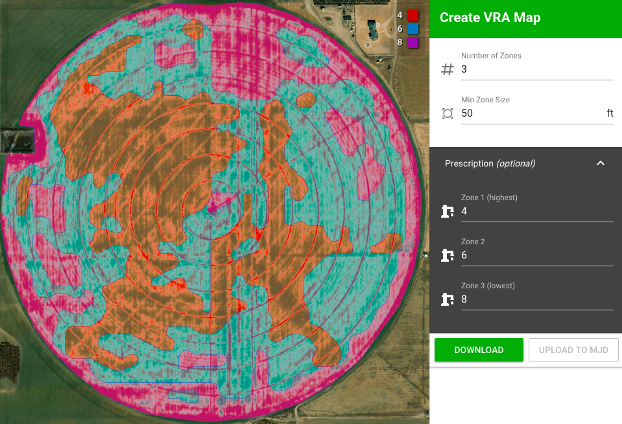The cotton plant has perhaps the most complex structure of all major field crops. In addition to fertilizer and fungicides, pesticides, and herbicides, cotton growers must also optimize their applications of growth regulator.
An “indeterminate” crop, cotton’s vegetative growth will continue above the fruiting branches even after reproductive growth has been initiated. The crop’s size and maturation rate correlates with the amount of moisture and heat units available to it: northern regions and higher elevations generally have fewer daily heat units than southern states.
Regardless of location, cotton left to grow unchecked can exhibit rank growth and become large and wooly in appearance. The excess vegetative growth can cause fruit shed, decrease lint quality, hurt yields, and make the crop more difficult to harvest. The plant also becomes more vulnerable to boll rot and other pest and disease pressures.

Without the grower’s intervention, cotton will naturally continue to direct its energy toward adding length between nodes, resulting in fruit-bearing nodes that do not reach full yield potential at maturity. Applying a plant growth regulator such as Pix (mepiquat chloride) allows growers to regulate vegetative and reproductive growth for a successful harvest.
Agronomist Scott Schechter, who runs Eagle Precision Ag out of Hugoton, Kansas, says he considers a range of details when dialing in plant growth regulator applications.
“Environmental factors like the history of the soil, the amount of the water in the soil at the time of application, and upcoming weather events can all affect when to apply Pix,” he notes. “With cotton, we want medium sized plants with large bolls so that it’s easy for the cotton stripper to move through the field. We apply growth regulator on average four times a year, but if we get quite a bit of rain, we will apply more often—up to seven or eight applications.”
To obtain the maximum yield for each field he manages, Scott uses variable rate application (VRA) of plant growth regulator, assessing the different condition of plants within the same plot and adapting dosage and flow rate of the growth regulator accordingly.
Scott says the VRA approach has proven to be the most effective way to apply growth regulators on cotton. By using aerial imagery to create more precise VRA zone maps, he finds he’s able to improve areas of the field that have been problematic in the past. As a Ceres Imaging customer, he can easily generate zones based on chlorophyll data and export them to the relevant VRA applicator.

“If you have a year's worth of imagery ahead of time, you can see from last year’s crop where you won and where you lost in the last harvest,” Scott explains. “With several years of imagery maps, we can see trends and map out a good variable rate application plan."
For Scott, achieving a more consistent crop at harvest time is always a management goal. Ceres Imaging allows him to make the necessary adjustments to chosen portions of field by varying not only Pix applications, but nutrients and irrigation. Imagery can reveal disruptions to the watering pattern undetectable to the naked eye.
“We think having the imagery makes us money in the end, because we can get a better overall average yield.”
